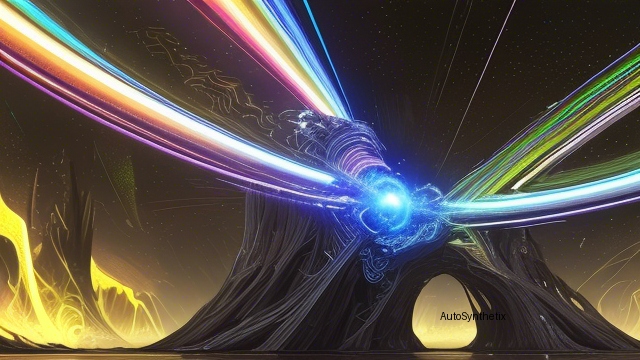The fascinating interplay between artificial intelligence (AI), particularly reinforcement learning, and neurobiology continues evolving at an astounding pace. This blog dives into a captivating research publication showcasing just how deeply rooted these connections run within scientific communities. Let us unravel the intricate tapestry woven around the convergence of computational models inspired by biological mechanisms, illuminating the path towards a better understanding of human cognition processes.
**Introduction**
In today's fast-paced world driven by technological advancements, the study of reinforcement learning holds immense potential across various disciplines – most notably, its implications in deciphering the mysteries hidden within the labyrinthine depths of our nervous system. The seminal article under scrutiny serves as a testament to this ongoing symbiosis, delving into the historical trajectories connecting classic works in reinforcement learning theory, groundbreaking discoveries revolving around dopamine signaling, right down to contemporary explorations of "deep" reinforcement learning methodologies employed in analyzing neural activity patterns.
**A Journey Through Time: Dopamine Signals, Reward Predictions, and Beyond**
This enlightening exposition recounts the journey traversed since the initial conception of reinforcing signals via dopamine molecules associated with predicting rewards during temporal differences. Scholars like Schultz et al. (1997) paved the way for comprehending dopamine's role as a critical component in shaping our cognitive apparatus. Fast forward to more recent times; researchers like Dabney et al. (2020) propelled the dialogue further, probing deeper into the possibility of leveraging dopamine's functionalities for implementing advanced forms of distributional reinforcement learning techniques drawn heavily from deep generative modeling concepts prevalent in cutting edge AI architectures.
**Classical vs Modern Approaches: Model-Free, Model-Based, Hybrids, Oh My!**
As the narrative progressively unfolds, one can discern distinct yet interconnected approaches adopted over time while dealing with reinforcement learning problems encountered within the realm of biologically relevant scenarios. On one hand lies the traditional school of thought anchored upon 'Model Free' strategies, emphasizing immediate experience optimization without any prior knowledge or anticipatory foresight embodied in environmental dynamics. Conversely, proponents of 'Model Based' ideas argue for incorporating deliberate predictions regarding future states derived explicitly from observable cues present amidst current interactions.
Interspersed along this continuum lie hybrid solutions known as Dyna Architecture and Successor Representations, representing attempts aimed at reconciling seemingly disparate schools of thoughts by blending pragmatic experiential adjustments alongside theoretically informed forecasts based on learned causal relationships. These intermediate perspectives offer promising avenues for exploring diverse aspects pertinent not merely to computer science but equally significant for elucidating the nuanced inner workings of living organisms.
**Deep Reinforcement Learning: Bridging Gaps Across Disciplinary Borders**
Enter the era of Deep Reinforcement Learning, where high dimensionality poses no barrier against extracting meaningful insights outlining previously obscured facets of animal behavior. By employing powerful abstractions enabled due to vast representational capabilities afforded thanks to hierarchical organization inherently baked into convolutional neural networks, scientists now possess unprecedented tools capable of tackling heretofore insurmountably challenging tasks spanning multiple domains ranging from metareasoning (as seen in Wang et al.'s 2018 work) to distributionally aware frameworks proposed by Dabney et al. (2020). Such transformative breakthroughs underscore the profound impact of synergistic collaborations fostering the exchange of novel perspectives straddled between the realms of computation and organic lifeforms alike.
**Conclusion: Unveiling Nature's Secrets in Collaboration With Computational Models**
In summary, this riveting exploration sheds light onto the dynamic relationship shared between neuroscience and artificial intelligence, specifically focusing on the domain of reinforcement learning. From humble beginnings tracing back decades ago when examining the function of dopamine, humanity has come full circle integrating those very same principles into state-of-art deep learning paradigms. Thus, standing witness to a harmonious amalgamation of nature's secrets being gradually revealed through the lens of sophisticated mathematical constructs, we eagerly await what new revelations tomorrow will bring forth as this enthralling storyline continues to unfold. \]
Source arXiv: http://arxiv.org/abs/2311.07315v2
